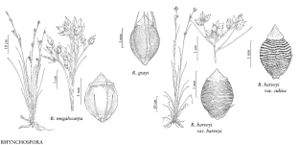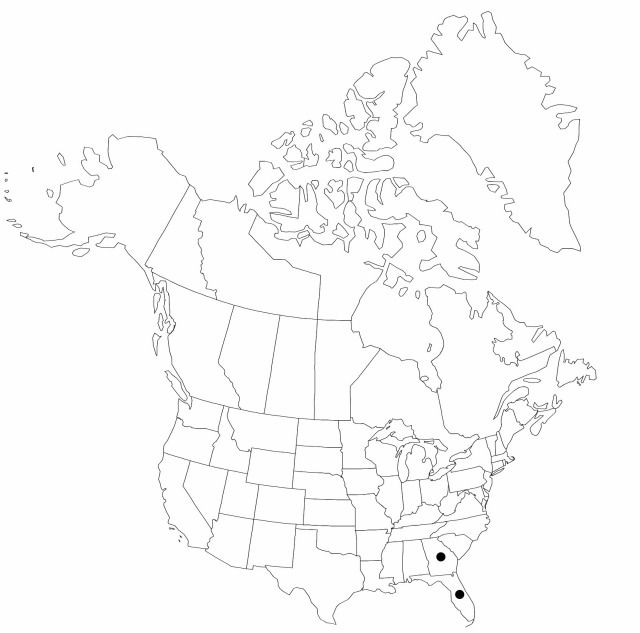Rhynchospora harveyi var. culixa
Novon 9: 206. 1999.
Plants perennial, cespitose, to 70–80 cm. Culms mostly excurved, slender. Inflorescences: spikelet clusters mostly loose, branching lax, ascending to arching, ultimate branches with few spikelets; leafy bracts setaceoustipped, these and bractlets exceeding proximal clusters, exceeded by distal. Spikelets prevalently lanceoloid, 3–4 mm, apex acute or acuminate; fertile scales ovate, 2.5–3.5 mm, apex acute, mostly mucronate. Flowers: perianth bristles 6, short, reaching at most to fruit midbody, antrorsely barbellate. Fruits 1 (–2) per spikelet, 2–2.2 mm; body brown or redbrown, obovoid, lenticular, 1.5–1.6 mm; surfaces with numerous, wavy lines of tiny pitlike, short-rectangular, vertical alveolae, separated by numerous, transverse, undulate, low, broad ridges; tubercle with narrow buttress, lowconic, 3–5 mm.
Phenology: Fruiting spring–summer.
Habitat: Sands and peats of savannas, mostly rises in bogs in pinelands or sandhill bog ecotones
Elevation: 0–200 m
Discussion
Of conservation concern.
Variety culixa is distinguished from var. harveyi by a lower, more slender habit, by sparser inflorescences, the terminal cluster overtopping subtending leafy bract, and by the comparatively flatter fruit. Its fruit body surfaces have broader, low, smooth, and pale transverse ridges.
Selected References
None.
Lower Taxa
"shortened" is not a number."wider" is not a number.

